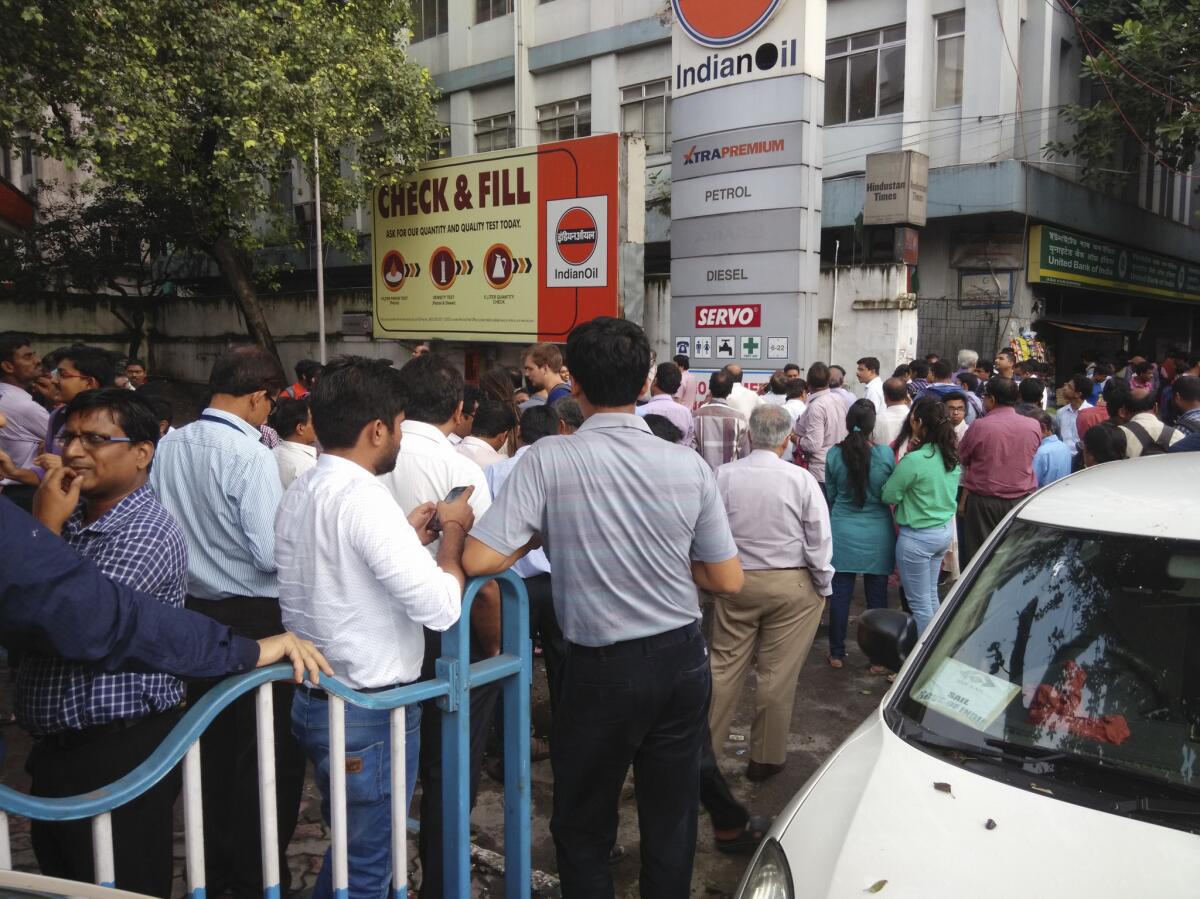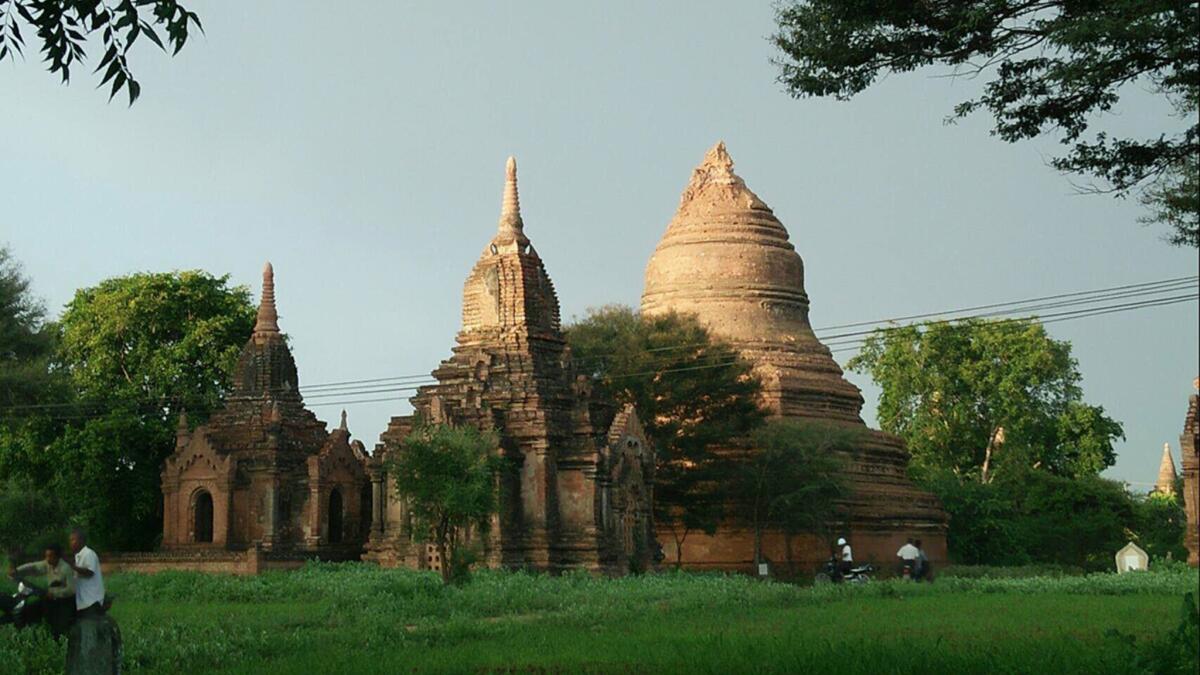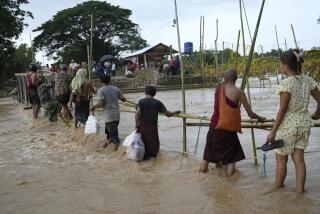Ancient Buddhist pagodas damaged in Myanmar’s magnitude 6.8 earthquake

- Share via
Reporting from BANGKOK — A powerful magnitude 6.8 earthquake shook central Myanmar on Wednesday, damaging scores of ancient Buddhist pagodas in the former capital of Bagan, a major tourist attraction, officials said.
The U.S. Geological Survey said the quake, which hit around 4:34 p.m. local time, was centered about 15 miles west of Chauk, an area west of Bagan. It was located fairly far below the Earth’s surface at a depth of about 52 miles, it said. Deep earthquakes generally cause less surface damage.
At least 94 brick pagodas in Bagan were damaged, the Ministry of Religious and Cultural Affairs said in a statement. Bagan, also known as Pagan, has more than 2,200 structures, including pagodas and temples, constructed from the 10th to 14th centuries. Many are in disrepair, while others have been restored in recent years, aided by the U.N. cultural agency UNESCO.
Dozens killed after magnitude 6 quake rattles Rome and central Italy »
The vast site is the country’s premier attraction for tourists, who can view a panorama of temples stretching to the horizon flanked by the mighty Irrawaddy River, an especially impressive experience at sunset.
Myo Thant, general-secretary of the Myanmar Earthquake Committee, said that other areas apparently were not badly affected and that there were no reports of deaths in connection with the quake.
However, police officer Htay Win in Pakokku, about 45 miles from the epicenter, said one person there had been killed, and one was injured. “The person was killed by falling bricks from a building,” he said.
The Ministry of Social Welfare, Relief and Resettlement reported two other deaths in nearby Thitapwe village.

Vincent Panzani, a staff member in Pakokku for the aid agency Save the Children, said colleagues in the area agreed it was the strongest earthquake they had experienced.
“We felt quite heavy shaking for about 10 seconds and started to evacuate the building when there was another strong tremor,” he said in comments sent by email. “Most of the reports of damage have been to the pagodas in the area with dozens impacted. There have also been reports of damage to smaller, more basic buildings including a collapsed wall and a destroyed roof.”
The epicenter is an area where earthquakes are fairly common, but usually don’t cause many casualties because there are no large, densely populated cities. However, reports of damage from remote villages often are slow to arrive.
Staff members of the London-based international charity Save the Children in Pakokku, about 45 miles from the epicenter, said they felt heavy shaking when the earthquake struck and hurried outside, according to Evan Schuurman, a spokesman for the group. He said they reported moderate damage in the area, including tilting pagodas and buildings with large cracks.
Worried residents of Yangon, the country’s main city, rushed out of tall buildings, and objects toppled from tables and from Buddhist shrines in homes. However, there were no immediate reports of serious damage in the city.
The quake also was felt in half a dozen states in neighboring India, where people rushed out of offices and homes at several places. It caused buildings to sway in Bangkok, Thailand’s capital, several hundred miles to the east. There were no immediate reports of damage in either country.
The last major quake in the area occurred in April about 180 miles farther north, and measured magnitude 6.9. It caused no reported casualties and only minor damage.
ALSO
Earthquake: 3.0 quake strikes near Calipatria, Calif.
A dangerous confluence on the California coast: beach erosion and sea level rise
Cancer surpasses heart disease as the leading cause of death in California
UPDATES:
8:50 a.m.: This article has been updated with additional deaths.
7:40 a.m.: This article has been updated with eyewitness accounts and additional damage details.
6:22 a.m.: This article has been updated with details about the earthquake’s location and the buildings it damaged.
5:40 a.m.: This article has been updated with additional details.
This article was originally published at 4:35 a.m.
More to Read
Sign up for Essential California
The most important California stories and recommendations in your inbox every morning.
You may occasionally receive promotional content from the Los Angeles Times.










